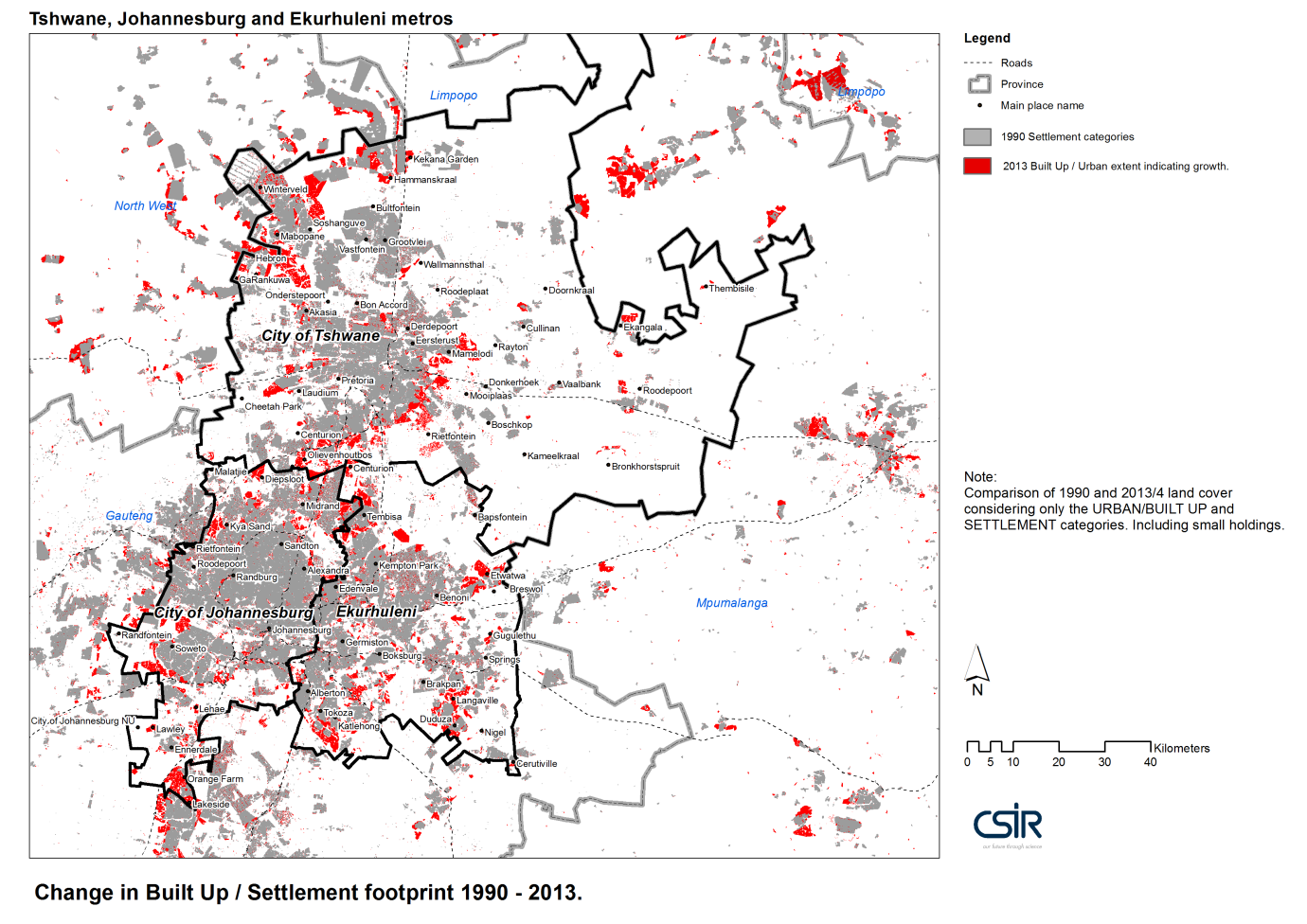Presently, South Africa like many other countries on the African continent is experiencing continuing urbanisation. The United Nations estimates that in 2030, 71 per cent of South Africa’s population will be living in urban areas, reaching nearly 80 per cent by 2050 (COGTA, 2014, p. 12). This also places pressure on cities to accommodate and plan for this need to house growing numbers of residents. Continued physical outward urban growth (sprawl) is one of the challenges cities have to manage and limit where possible. This also has implications for city sustainability, considering the consumption of resources and pressure on the environment. Spatial information can be used to detect the extent to which city settlement footprints has changed.
This indicator considers the continued physical outward urban growth between 1990 and 2014.

Using the latest release of the 2013/14 South African National Land Cover1 as well as the 1990 land cover enables a comparison of 24 years of land cover change. By using only ‘settlement’ and ‘urban’ classes for both periods, it is possible to observe a general change in the urban footprint. This illustrates where most of the new settlement / urban growth has taken place. It does not reflect densification within the existing urban environment.
1. [Source: GeoTerraImage, 2015. South African National Land Cover Change datasets 1990-2014.]↩The availability of the latest Landsat 8 satellite imagery offered the opportunity to create a new, national land-cover dataset for South Africa, circa 2013-14, replacing and updating the previous 1994 and 2000 South African National Land-cover datasets. The data items were developed by GeoTerraImage (see http://www.geoterraimage.com/). The data can be obtained from GeoTerraImage © or the Department of Environmental Affairs under its Open Data User Licence.
- COGTA. (2014). Integrated Urban Development Framework. Pretoria: Cooperative Governance.
- International Standards Organisation. (2014, May 15). Sustainable development in communities: City Indicators for service delivery and quality of life. ISO 37120 briefing note. International Standards Organisation.
Also see: National population growth and Sub-city population growth
For more information contact:
Johan Maritz,
jmaritz@csir.co.za


